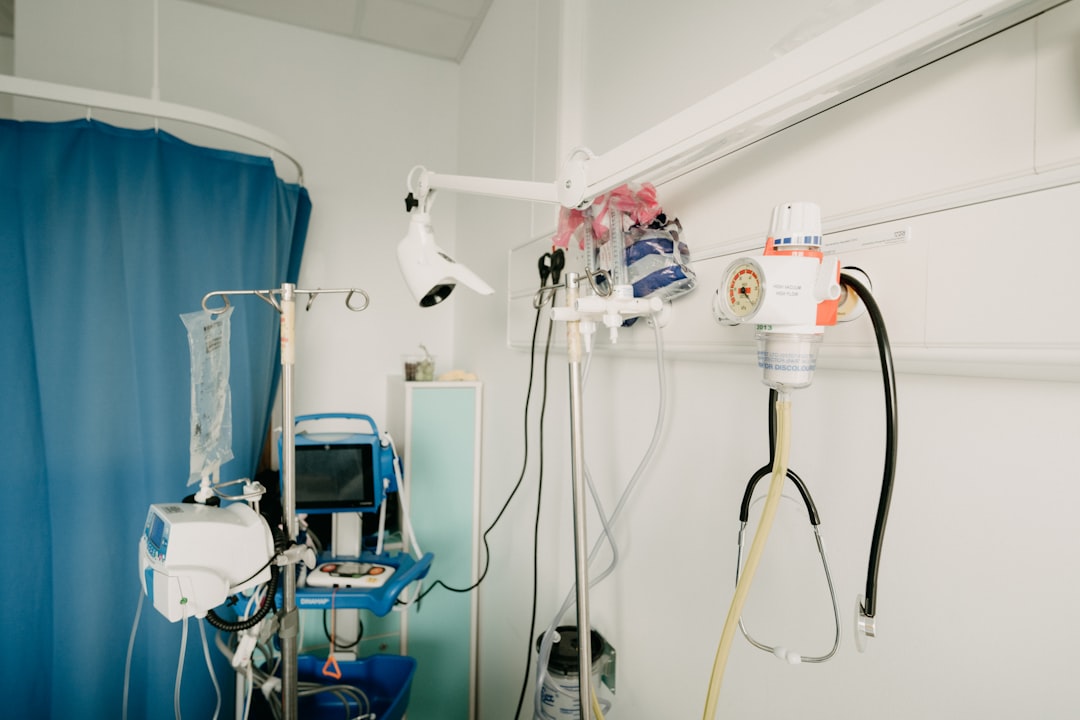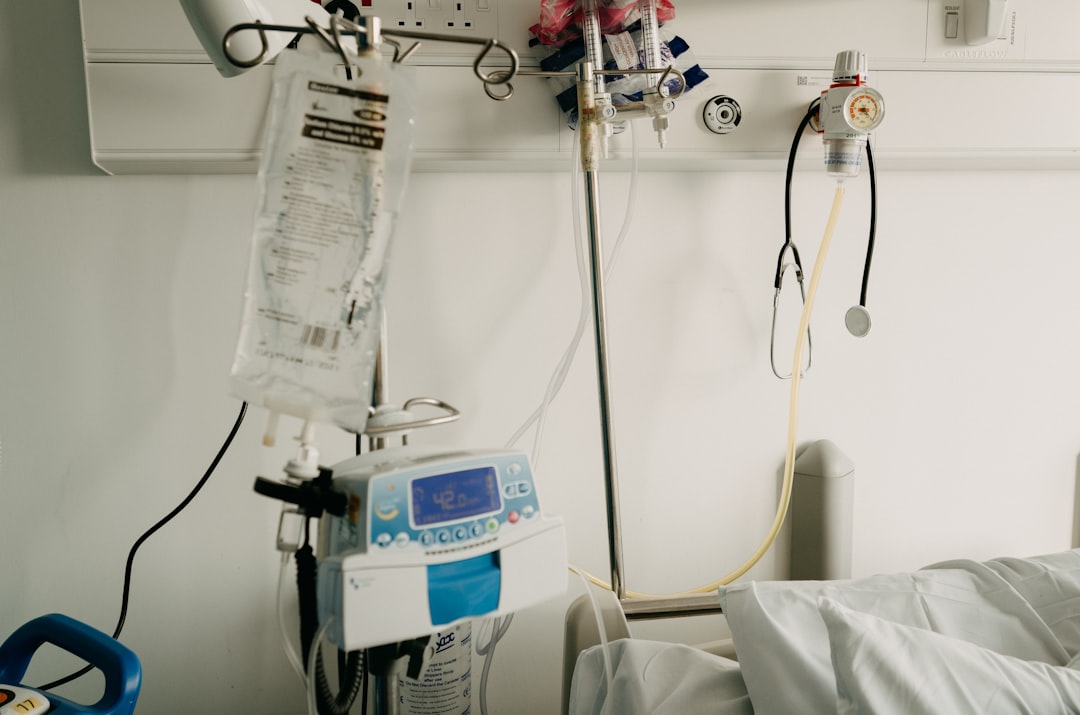

Engage prospects with a scan and streamline customer engagement with FREE QR code marketing tools by Sona – no strings attached!
Create a Free QR CodeFree consultation

No commitment

Engage prospects with a scan and streamline customer engagement with FREE QR code marketing tools by Sona – no strings attached!
Create a Free QR CodeFree consultation

No commitment
Dialysis clinics face ongoing pressure to deliver superior patient experiences while gathering actionable feedback to improve care. Missing high-value feedback from patients who remain anonymous in traditional systems can result in missed growth opportunities and poor care insights. Paper forms, outdated kiosks, and ad hoc approaches not only frustrate patients but also deny administrators timely access to meaningful input, increasing the risk of disengaged or dissatisfied patients slipping through the cracks.
QR codes are rapidly transforming feedback collection for dialysis clinics by enabling instant, frictionless connections between physical clinic environments and digital touchpoints. Unlike conventional comment cards that easily go unnoticed or unfilled, often by those who have the most nuanced experiences, quick-scan QR codes remove barriers and give every visitor a voice. With a simple scan, patients and families can share meaningful insights, connect to support resources, or highlight urgent issues directly from waiting rooms, treatment chairs, or clinic handouts—all without paperwork or administrative bottlenecks.
When implemented thoughtfully, QR codes streamline the feedback process for all stakeholders in dialysis care. Clinics gain a more complete, real-time picture of patient sentiment, directly addressing the common challenge of lost or stagnant input, while patients appreciate faster, easier ways to communicate that ensure their experiences shape ongoing improvements. Explore how dialysis clinics can introduce QR solutions that bolster both operational efficiency and patient satisfaction by bridging data gaps and removing hidden barriers to participation.

Dialysis clinics frequently struggle to capture feedback from high-value patients who may never fill out a manual form or speak up in person. QR codes bridge the gap between fleeting, in-person interactions and actionable digital feedback, making it easier to identify valuable insights that might otherwise go unrecorded. This shift not only closes gaps in the patient journey but directly addresses the frustration of missing nuanced input needed to improve care.
Here is how to leverage QR codes effectively to modernize your feedback workflows and reduce administrative burden across the clinic. Focus on replacing analog processes, setting measurable goals, and designing clear, patient-friendly experiences that encourage participation without adding stress or complexity. When you make scanning intuitive and beneficial, completion rates rise and the quality of insight improves.
For clinic operations leaders, moving from manual data collection to QR-driven workflows can dramatically reduce administrative toil while surfacing silent frustrations more quickly. This approach streamlines feedback loops and accelerates root-cause analysis, allowing teams to address emerging issues before they turn into chronic dissatisfaction.

Many dialysis clinics struggle with incomplete patient data and fragmented feedback processes. This gap can lead to unknown complaints, recurring issues, or disengaged patients quietly seeking care elsewhere. QR codes help close these gaps by turning every poster, packet, or reminder card into an always-on touchpoint that connects offline experiences to digital actions.
The value goes far beyond convenience. QR codes shorten the distance between a patient’s experience and the clinic’s ability to act on it. By lowering friction and capturing context quickly, they help clinics spot patterns that typically get lost in long paper trails or sporadic phone calls. As a result, teams can respond faster, learn continuously, and demonstrate a stronger commitment to patient-centered care.
For example, clinics that attach QR codes to appointment cards or billing statements enable patients to give immediate feedback after a visit, request help with financial assistance, or access multilingual support pages. These just-in-time interactions reduce churn risk by resolving confusion early, while also confirming where outreach is working best.

Dialysis clinics often operate with incomplete or outdated contact data, which makes outreach and follow-up harder than it needs to be. Choosing the right QR format for the job helps gather richer, structured information that fuels service improvements and more personalized patient support.
Dynamic QR codes are especially useful in healthcare settings because they allow you to change destinations and content as protocols or educational materials evolve. Static codes still have a place for evergreen items, such as staff vCards or stable Wi-Fi credentials, but most feedback and support flows benefit from dynamic links and analytics.
When in doubt, use dynamic QR codes to future-proof your print assets and ensure every scan remains relevant. Platforms like Sona QR make it easy to generate, organize, update, and track these codes across locations and campaigns.

Dialysis clinics often miss input from key phases of the patient journey, such as arrival, treatment, and follow-up. QR codes provide a low-effort way to turn existing materials into feedback engines that capture real sentiment where it matters most. The goal is to place scanning opportunities precisely where patients are ready to respond.
By aligning QR placement with the natural flow of a visit, you increase participation without adding friction. Use A/B testing and analytics to confirm which placements drive the highest quality responses, then standardize those best practices across your network.
When measurement is baked into each touchpoint, your team can track performance at a granular level, identify where sentiment dips, and fix issues faster. Over time, these improvements compound into stronger retention and a more patient-centered reputation.
Different moments in the dialysis journey create different challenges for data collection. Patients are often balancing health concerns, transportation logistics, and financial questions, so you need lightweight, well-timed experiences that respect their context. QR codes are well suited to these realities.
Below are three high-impact use cases that match common clinic interactions. Each can be piloted quickly and expanded when you see results.
These use cases convert everyday materials into reliable insight pipelines. The most effective clinics connect these scans to automated workflows so that urgent feedback triggers alerts while positive experiences are routed to testimonials and staff recognition. Browse Sona QR’s use case library for additional ideas.
Dialysis clinics often find it hard to distinguish between patient and caregiver needs or to identify which individuals are at risk of disengagement. Each QR code scan is a strong intent signal that can help you build more precise audience segments and tailor follow-up content that truly resonates.
With thoughtful tagging and integration, scans from multiple touchpoints tell a story about the patient journey. This lets your team guide people toward the right resources, whether that is a peer support group, a clinical education module, or financial counseling.
By automating audience creation and nurturing, clinics can personalize communication without adding staff overhead. Over time, these segments support proactive retention strategies that reduce churn and strengthen satisfaction.
Disconnected campaigns often cause duplicated effort, inconsistent messaging, and missed opportunities. QR codes unify your physical and digital channels by making every print asset interactive and measurable. This closes the loop between outreach and outcome, and helps you prioritize what works.
Dialysis clinics rely on a mix of in-clinic signage, printed materials, community events, and digital channels. QR codes create continuity among them. Use a central platform like Sona QR to manage your codes, monitor performance by location, and keep messaging current across all touchpoints. For added context on dialysis outreach, this overview of digital marketing can help align your channel plan.
QR codes serve as a reliable onramp to your digital engagement engine. When you centralize management and analytics, you gain a clear view into which messages and placements are effective, and you can iterate without the cost of reprinting. Start creating QR codes for free at Sona QR.
Dialysis clinics frequently struggle with messy rollouts and inconsistent results when trying new feedback or engagement tools. A structured deployment process reduces risk and accelerates learning. Use the following steps to roll out a QR program that collects better feedback, nurtures patient relationships, and integrates smoothly with your systems.
Start with one or two pilot use cases, build your measurement plan, and commit to short improvement cycles. Involve clinical staff early so messaging is empathetic and accurate, and make sure the operational team has access to analytics that inform staffing and workflow decisions.
A campaign deployed with this discipline minimizes friction and maximizes learning. Over time, you will build a repeatable playbook for rollouts across multiple clinics, with benchmarks that make performance comparisons straightforward and actionable.
Too often, dialysis clinics invest in new feedback tools without measuring their true impact. Without solid tracking and attribution, it is difficult to connect scans to outcomes like higher satisfaction or lower no-shows. Robust analytics illuminate what is working, what needs improvement, and how to allocate resources.
An effective analytics setup captures scan context, links engagement to known patients or caregivers when appropriate, and routes urgent signals to the right teams. It also protects privacy and complies with regulations, using permissions and data minimization to safeguard patient trust.
When you use platforms like Sona QR, you benefit from built-in dashboards and integrations. Sona is an AI-powered marketing platform that turns first-party data into revenue through automated attribution, data activation, and workflow orchestration. With Sona, you can also connect scan activity to broader attribution models to understand how offline interactions contribute to digital engagement and downstream outcomes. See Sona’s blog post The Essential Guide to Offline Attribution: Maximizing ROI Through Offline Channels and Single vs Multi-Touch Attribution Models.
As your QR program matures, small enhancements can produce large gains. Focus on improving discoverability, making scans feel worthwhile, and connecting activity to automated workflows that save staff time while improving patient outcomes.
Consistency and coaching matter. The most successful clinics train front-desk and clinical staff to introduce QR participation with empathy. A simple script that explains the benefit and time required can double participation, especially for first-time visitors.
Creative deployment examples include printing QR codes on the back of visitor badges to encourage caregiver feedback, placing a small code on infusion pump signage that links to an equipment comfort survey, or adding a code to nutrition counseling handouts that connects patients to recipes and a short satisfaction poll. The aim is to pair every physical asset with a digital action that adds immediate value.

Dialysis clinics already using QR codes report gains in feedback quality, engagement, and operational agility. The biggest changes typically come from placing short, specific surveys at the exact moment when feedback is easiest to give. Clinics can then act quickly on clear, real-time signals.
Consider a regional center that replaced paper forms with mobile-first QR surveys throughout the patient journey. Within a few months, the clinic moved from sporadic to reliable insights across check-in, treatment, and discharge. Trends that were once invisible, such as mid-day wait time frustrations, came into focus and were addressed with staff scheduling adjustments.
These examples highlight a wider lesson. When QR experiences are short, clear, and placed where they are most relevant, participation rises and the insights become useful faster. Your team can then showcase improvements that came directly from patient input, reinforcing the value of scanning and establishing a positive cycle.
Dialysis clinics can stumble with QR initiatives when codes are placed out of sight, CTAs are vague, or analytics are not configured. Getting the basics right transforms QR from a novelty into a strategic engine for continuous improvement.
Prioritize accessibility, privacy, and empathy. Use large, high-contrast codes, provide translated prompts where needed, and make sure landing pages are mobile-first with simple language. Always communicate how feedback will be used and how privacy is protected to build trust. For broader context on clinical uses, see this overview of QR codes in healthcare.
Avoiding pitfalls like generic messaging, random placement, or lack of follow-up ensures that QR programs keep momentum. When staff see their efforts producing real improvements, adoption spreads and the program becomes part of the clinic’s culture.
QR codes provide dialysis clinics with a practical, cost-effective path to transform every patient interaction, from anonymous waiting room visits to post-treatment surveys, into actionable insights that tangibly improve both care and operations. By tackling long-standing pain points like untracked feedback, anonymous dissatisfaction, and fragmented outreach, clinics are better equipped to engage patients on their own terms and drive improvements with real-world data.
Supported by centralized tracking and analytics, QR code programs make it possible for clinics to measure outcomes with precision, respond to emerging needs in real time, and close critical insight gaps, all of which are vital to both clinical and financial success. Modern strategies enable clinics to iterate quickly, optimize across channels, and elevate the patient experience from the first scan to the final follow-up.
Succeeding in today’s healthcare environment means viewing every physical touchpoint as an opportunity for deeper engagement and learning. By adopting QR-driven, data-informed approaches, leading dialysis clinics move beyond passive feedback tools to proactive, personalized patient journeys, positioning themselves for sustainable growth and higher standards of patient-centered care.
QR codes have revolutionized dialysis clinics by transforming patient feedback collection into a seamless, real-time process that drives continuous improvement in care quality. Beyond simply gathering insights, QR codes enable clinics to enhance patient experiences, streamline communication, and identify key areas for service optimization—all while reducing administrative burden. Imagine instantly capturing honest patient feedback after every session, empowering your team to make data-driven adjustments that boost satisfaction and outcomes.
With Sona QR, dialysis clinics can effortlessly create dynamic, trackable QR codes that update instantly without reprinting, linking every scan to actionable insights that improve patient retention and clinic performance. This technology turns feedback into a powerful tool for patient-centered care and operational excellence. Start for free with Sona QR today and transform every scan into meaningful improvements that elevate your dialysis clinic’s success.
QR codes enable instant, frictionless feedback collection, improve patient engagement by removing barriers, provide real-time insights, reduce administrative burden, and connect physical touchpoints to digital resources.
Clinics can improve patient experience by replacing analog forms with easy-to-scan QR codes placed strategically, designing clear and short surveys, tracking responses in real time, and acting quickly on feedback to address patient concerns.
Effective strategies include integrating QR codes into brochures, appointment cards, billing statements, social media, community events, and in-clinic signage to unify physical and digital channels and measure engagement across touchpoints.
Clinics use dynamic QR codes linked to digital forms and dashboards that capture structured feedback, track scan data by location and time, sync insights to CRM systems, and automate alerts for urgent issues while protecting patient privacy.
QR codes facilitate collecting feedback on various aspects such as point-of-care comfort, staff responsiveness, appointment scheduling, billing clarity, and educational support, helping clinics address treatment experiences comprehensively.
Ideal placements include treatment chairs, waiting room signage, discharge packets, appointment cards, billing statements, and community event materials to capture feedback at moments when patients are most engaged.
Dynamic QR codes allow changing destinations without reprinting, support campaign tracking and analytics, and enable clinics to keep content current as policies or educational materials evolve.
QR codes replace manual data collection with digital feedback workflows, automate follow-ups, provide real-time analytics, and streamline communication channels, reducing time spent on paperwork and phone calls.
Clinics should minimize data collection, obtain patient consent when needed, ensure mobile-first and simple landing pages, communicate how feedback is used, and comply with local privacy regulations to maintain patient trust.
By integrating QR codes into appointment reminders and scheduling support, clinics enable easy confirmation or rescheduling, identify no-show patterns, and engage patients proactively to improve adherence.
Use Sona QR's trackable codes to improve customer acquisition and engagement today.
Create Your FREE Trackable QR Code in SecondsJoin results-focused teams combining Sona Platform automation with advanced Google Ads strategies to scale lead generation

Connect your existing CRM

Free Account Enrichment

No setup fees
No commitment required

Free consultation

Get a custom Google Ads roadmap for your business






Launch campaigns that generate qualified leads in 30 days or less.
